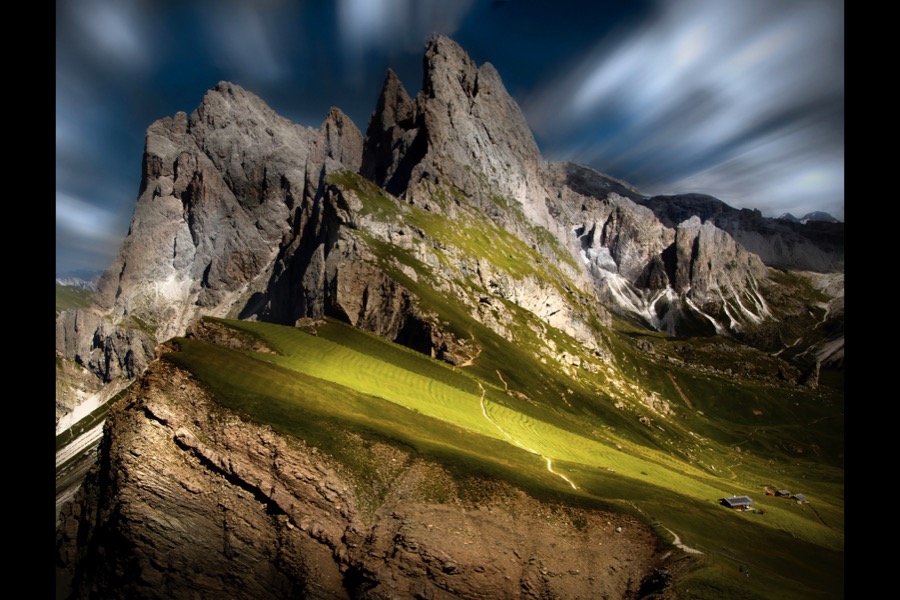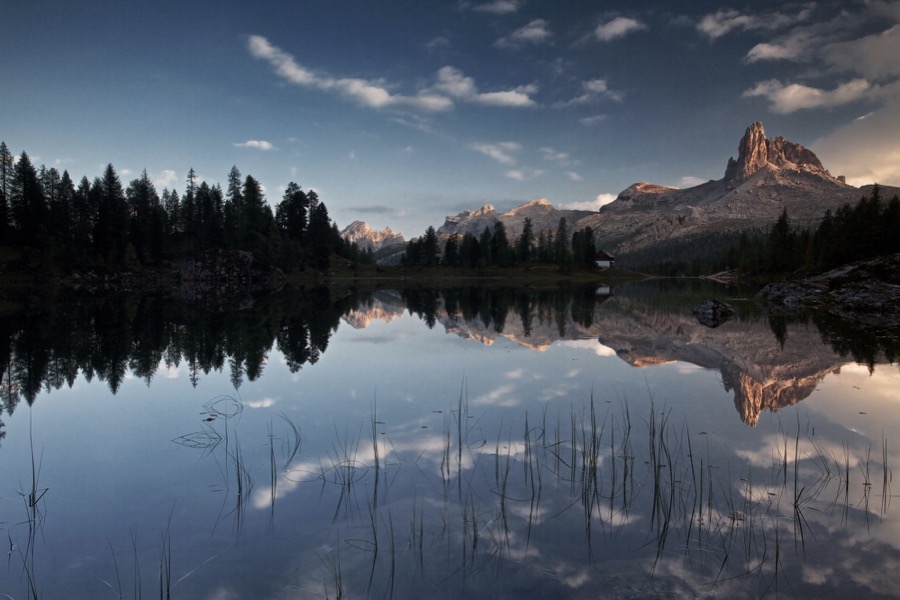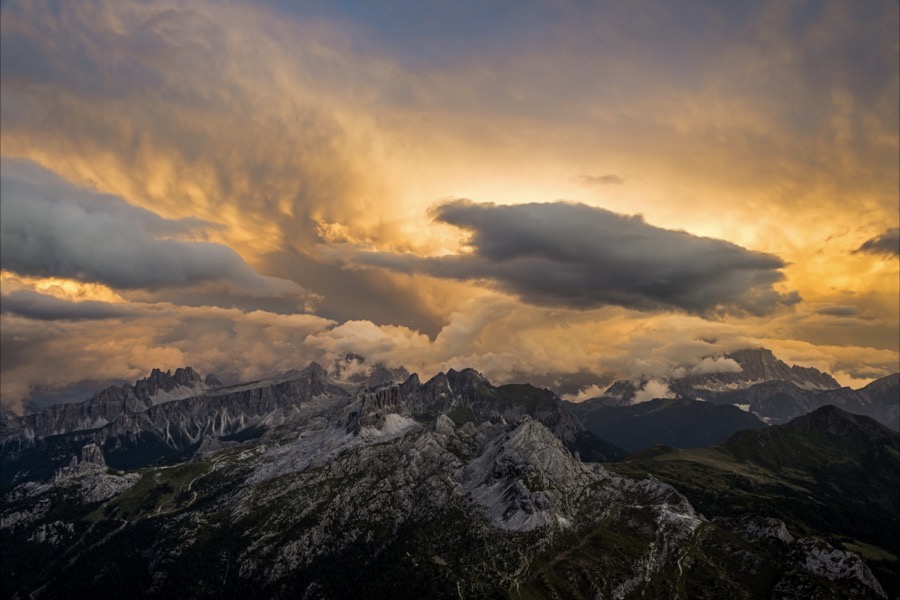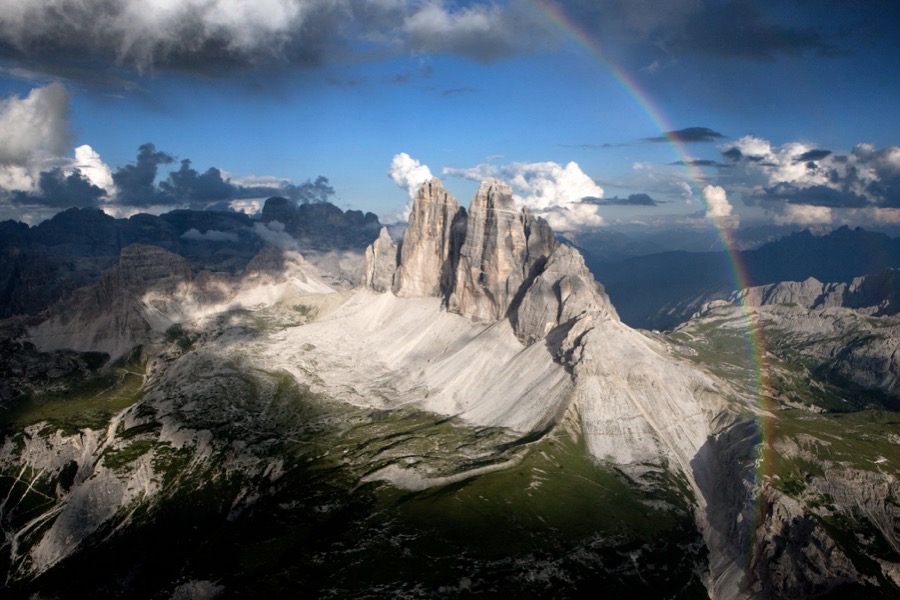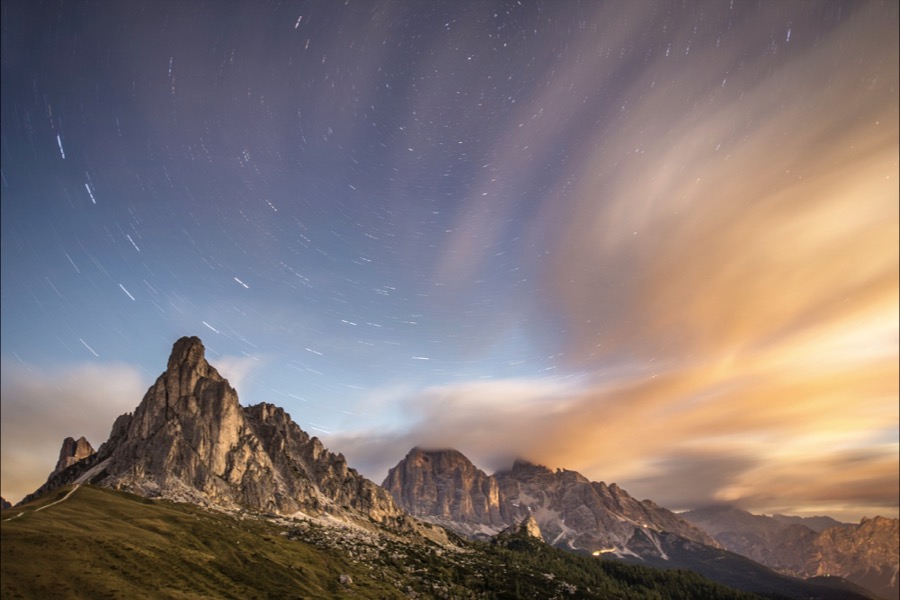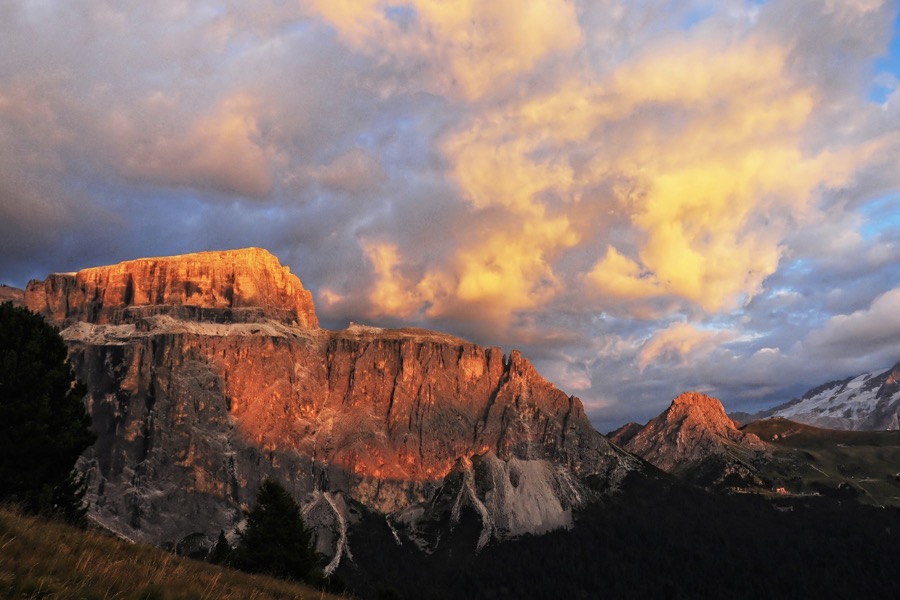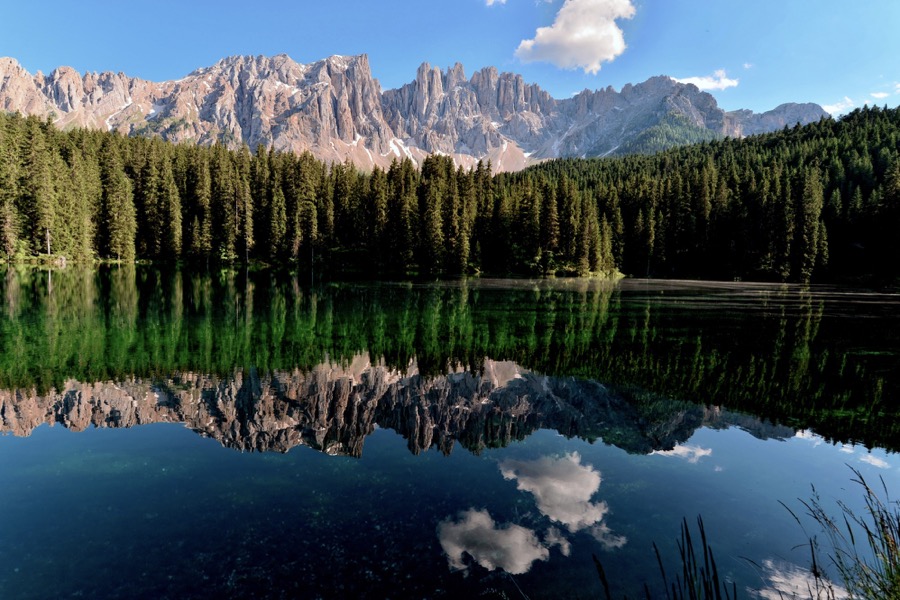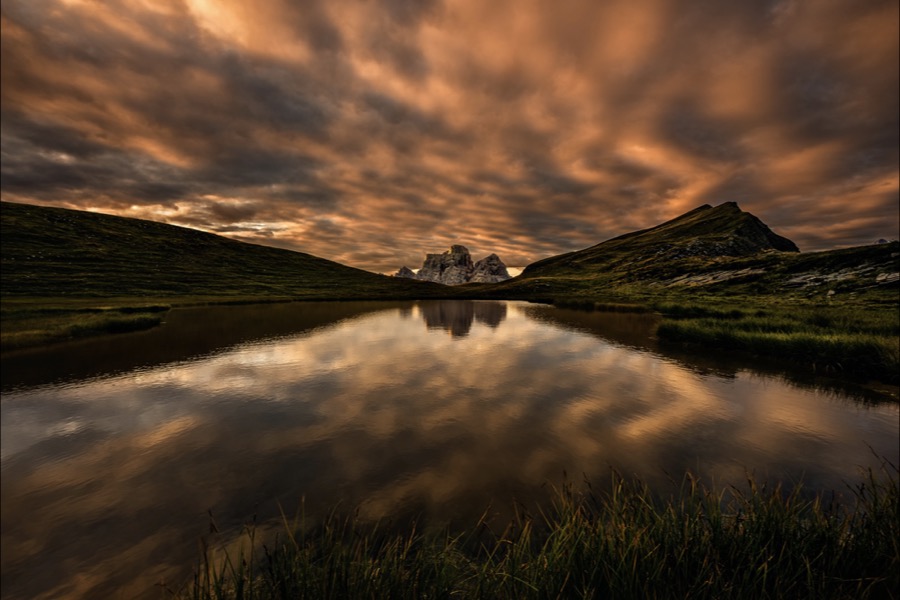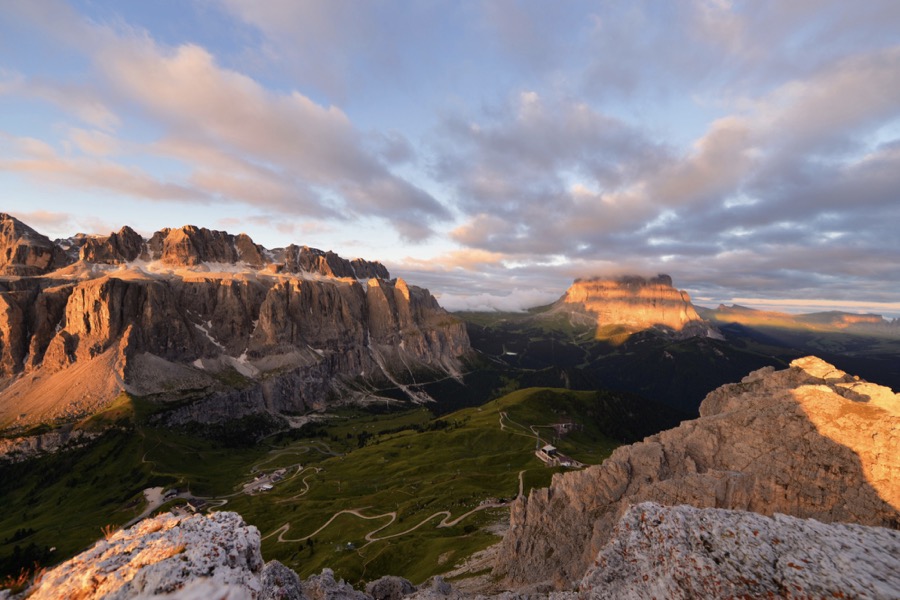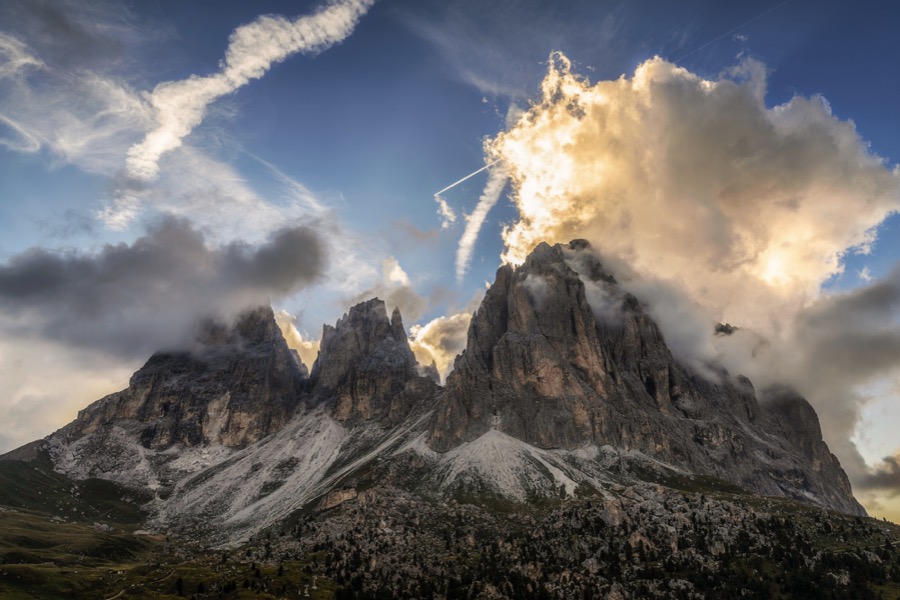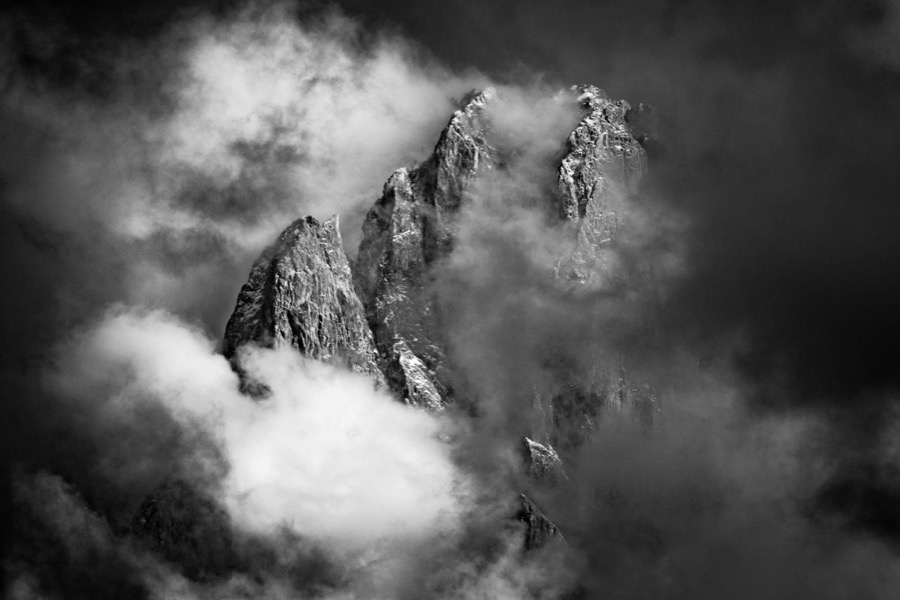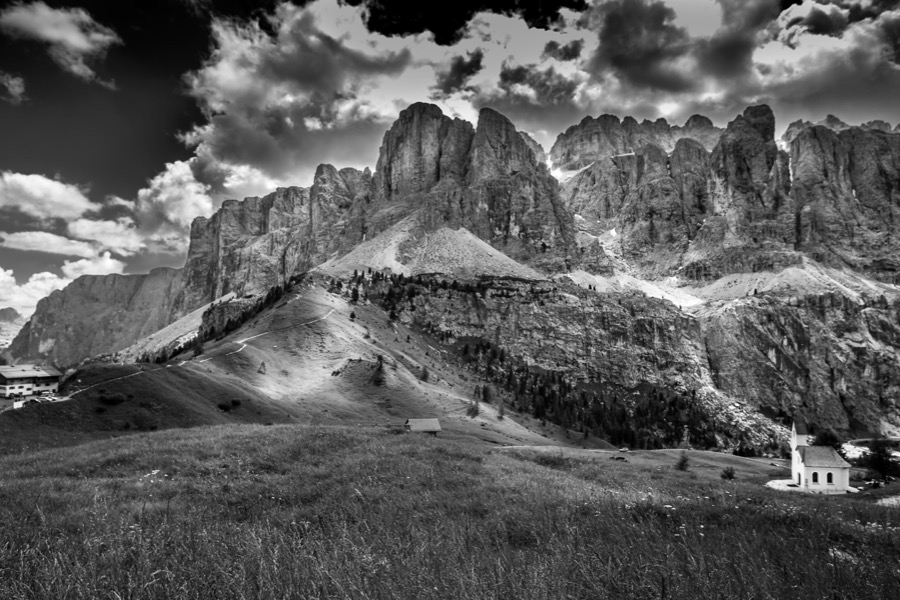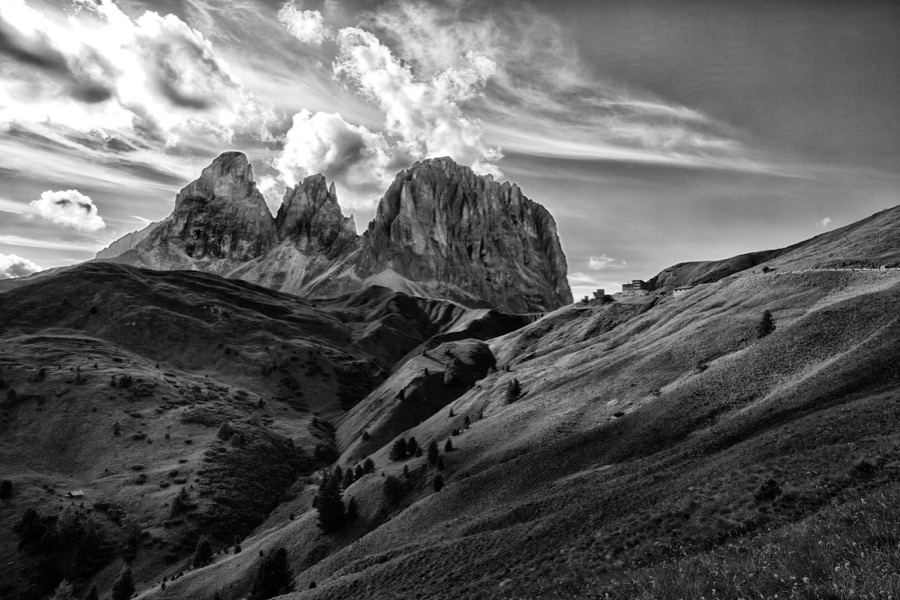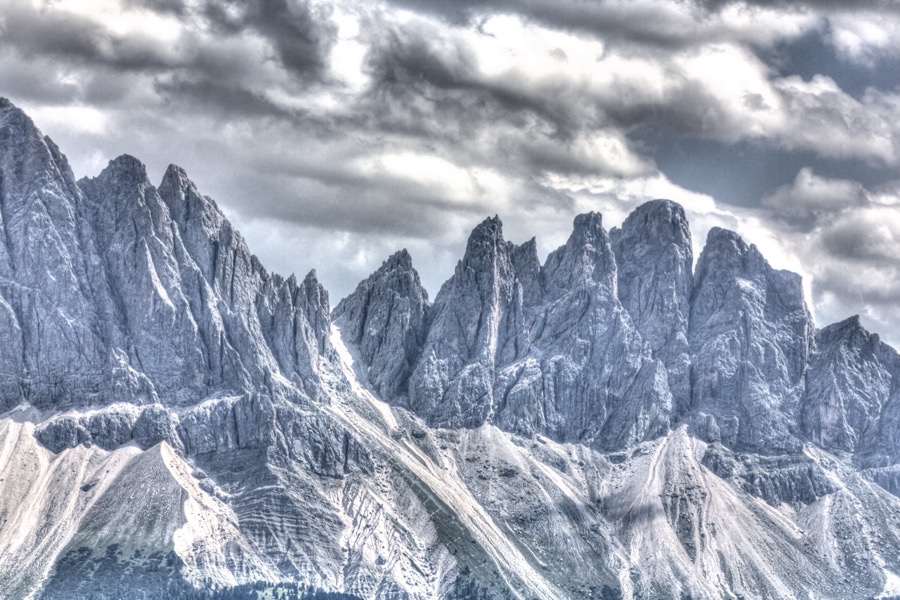The dolomites
Mountans yes, but also a monument of and to nature. Rockfaces yes, and an altar to our passions

UNESCO World Heritage
In 2009 UNESCO acknowledged the Dolomites as a World Heritage for being one of the world’s most fascinating natural landscapes, and, prior to this, greats such as Goethe and Le Corbusier had been inspired by the "Pale Mountains". All in all a confirmation that “our” mountains have a value which goes beyond a simple landscape aspect: the Dolomites represent a singular place for numerous provinces and regions and notwithstanding differences of border the UNESCO message of sharing a common value is epitomised here.
mountain chains
million years
Regions
Provinces
Valleys
The Sella Group is the baricentre of 4 valleys: Val Gardena, and its long woodcarving tradition; Alta Badia, and its Ladin glamour and fascination; Arabba, and its demanding mountain slopes; Val di Fassa, and its Trentino ways. Four valleys and four distinctive stories but with one common denominator – the Dolomites.
Discover the valleys 

Val Gardena is one of the five valleys in the Dolomites where for approximately 2,.000 years the Ladin language has been spoken, it having its roots in the fusion of Retico and Latin.
For centuries the principal activity of the valley was of an agricuktural nature, and then in the 1700s there was an emergence of artistic flair so that in the following decades many of the families passed from the land to concentrate on carpentry, sculpting, paintng, and design and decoration. The finished wooden sculptures from Val Gardena began to reach the main European markets and then made their way to the world at large. The next significant development was with the advent of tourism for there were numerous possibilities for excursions and climbing and as a result of the incoming visitors there were increased working opportunities and a new wealth came to the valley. Moving forward to today it can be said that Val Gardena is one of the most popular winter sporting locations in the world and has earned its status through hosting a number of international events. In 1970 the World Alpine Skiing Championships were held here, in 1981 Group B matches of the Hockey World Championships were held, and since 1972 the valley has been on the Ski World Cup itinerary, it having a Mens Downhill and Super G, both on the Saslong slope above S. Cristina.

Fodom is the valley of Livinallongo and at its extreme western point is the mountain village of Arabba. The valley is one of the 5 ladin valleys of the Dolomites. It was part of the Austro-Hungarian Tyrol for centuries until after the end of the First World War it became part of Italy.
The Sella Group, the central massif of the Dolomites, stands proud above the village. The village up to a few decades ago was a remote mountain location and it was only with the advent of winter tourism that it began to enjoy a strategic position for it found itself on the ski carousel of the famous Sellaronda. Livinallongo was perhaps one of the poorest of the Ladin lands through the centuries and the state of poverty reached its apex during the First World War, the front separating Austria and Itaky passing directly through this valley, and most of the local population were obliged to emigrate. In summer there is much opportunity for road cycling, going as far as Passo Pordoi and experienced hikers and climbers can enjoy the many assisted ropeways leading on to the higher peaks. The agricuktural tradition is not neglected for there is still great emphasis on milk production and preparation of much appreciated cheeses.

Alta Badia is a tourism area in the southern part of Val Badia, and it also is part of the Ladin world of the Dolomites. Corvara, Badia and La Valle are the three municipalities of Alta Badia, and the whole area today enjoys an international tourism clientele. Again the valley has strong agricultural roots, the working of the fields having been extremely arduous due to the rocky gradients and alpine climate not offering ideal nor very fertile ground, and poverty and hard times were not unheard of. It was the imposing Dolomite peaks circling the valley which gave rise to the tourism impulse at the beginning of the 20th century. After the end of the Second World War there had been a gradual growth of tourism and it taking the place of agriculture as the main activity of the inhabitants. In 1947 in Alta Badia Col Alta became the first approved and reguated chairlift in Italy.
Notwithstanding the growth of tourism and the strength in its artisan industry the agricultural sector has kept an important role in Alta Badia life. Indeed in all Val Badia it is so, and this gives the summer months here a distinctive look as the fields are cultivated and the farmers work their trade. The sporting tradition in Alta Badia can be seen in the long history of the Alpine Ski World Cup. The Giant Slalom being held on the Gran Risa slope at La Villa.

Val di Fassa is one of the 4 Ladin valleys leading off from the foot of the Sella Group and going in different directions In a topographic sense it is the natural extension of Val di Fiemme and it has 7 municipalities. Fascia, as it is called in Ladin, was part of the Austrian-Hungarian Tyrol for many centuries and again it was only after the First World Wat that it became part if Italy. Val di Fassa is the only Ladin valley to be in the Province of Trentino.
Passing through the valley one can notice the houses decorated in bright colour with decorative and happy illustrations. This goes back to the times of great poverty in the 19th century when the local men to make a living would travel to many places in Europe and make use of their artistic skills to embelish houses, churches and palaces. Val di Fassa also has tourism, both of a winter and summer nature, to thank for its relatively recent economic upturn.

